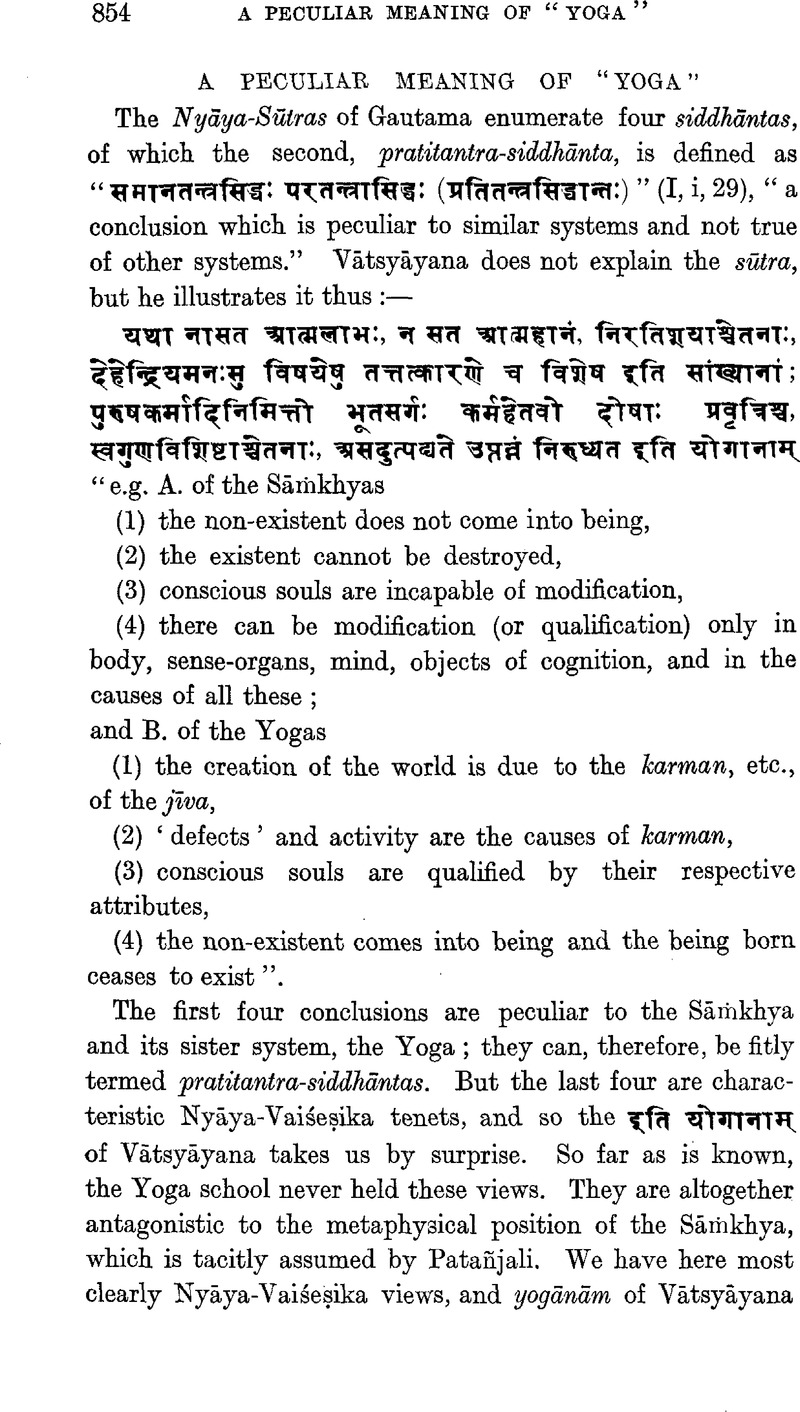No CrossRef data available.
Published online by Cambridge University Press: 15 March 2011

page 855 note 1 Sarasvatī Bhavana Studies, iii, p. 85, n.
page 855 note 2 [The point is here unimportant; but substantially Vācaspati Miśra seems to be right. Samāna = ‘what X shares’: in prati-tantra the prati- is distributive; see the Nyāya-kośa.—F. W. T.]
page 857 note 1 In the Sanskrit commentary Khadyota. In his earlier English translation he is not clear on the point.
page 857 note 2 Sarasvatī Bhavana Studies, iii, 84–6.
page 857 note 3 “See ibid., pp. 36, 40, and 41. Cf. Sā. Sūt., iii, 20: ![]() . The Yoga view, as represented in Sarva-siddhānta-saṁgṛaha, is briefly this:
. The Yoga view, as represented in Sarva-siddhānta-saṁgṛaha, is briefly this:
page 858 note 1 Indian Logic and Atomism, pp. 22 and 176.